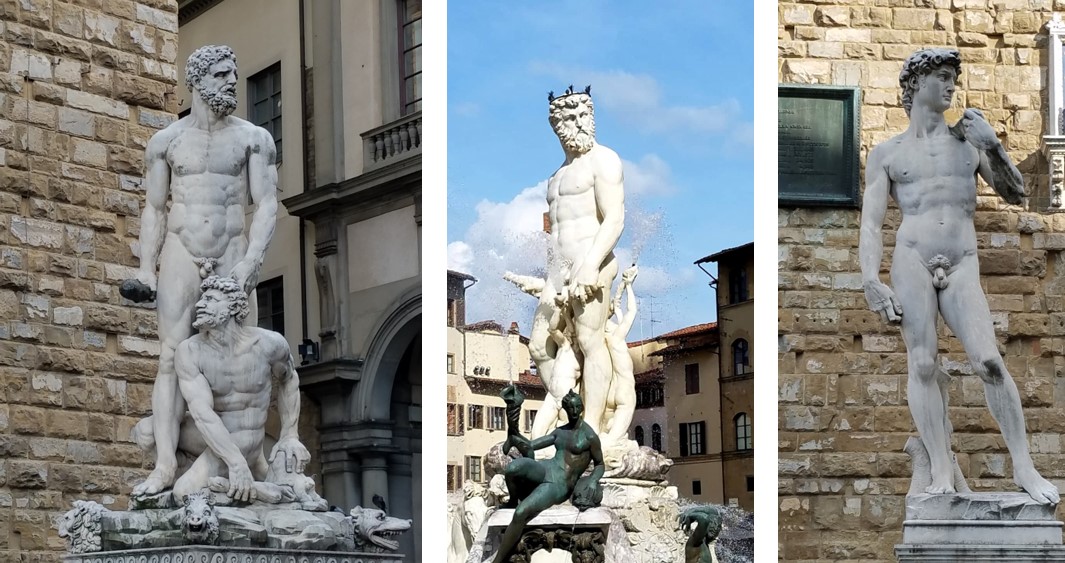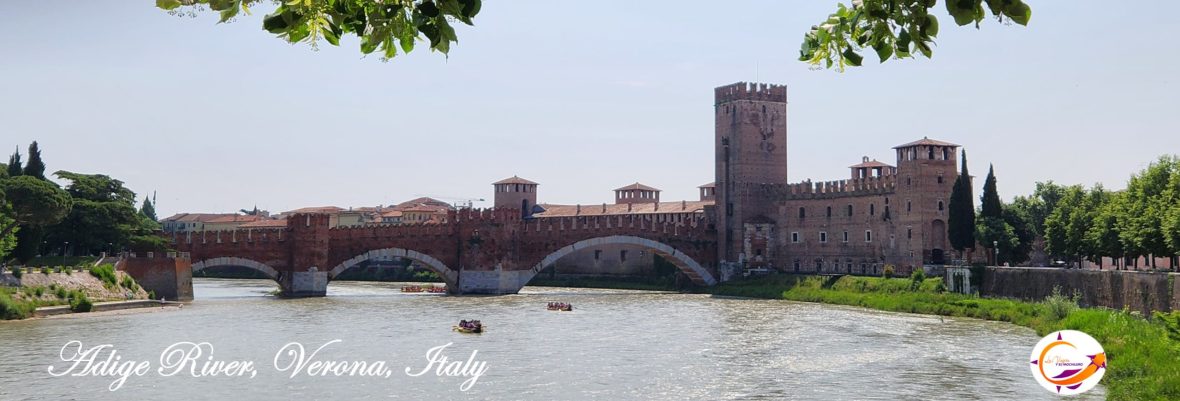In talking about the “Palazzo Vecchio”, we must mention that it has been known by names such as: “Palazzo Popolo, Palazzo Priori, Palazzo Ducale and Palazzo della Signoria”.
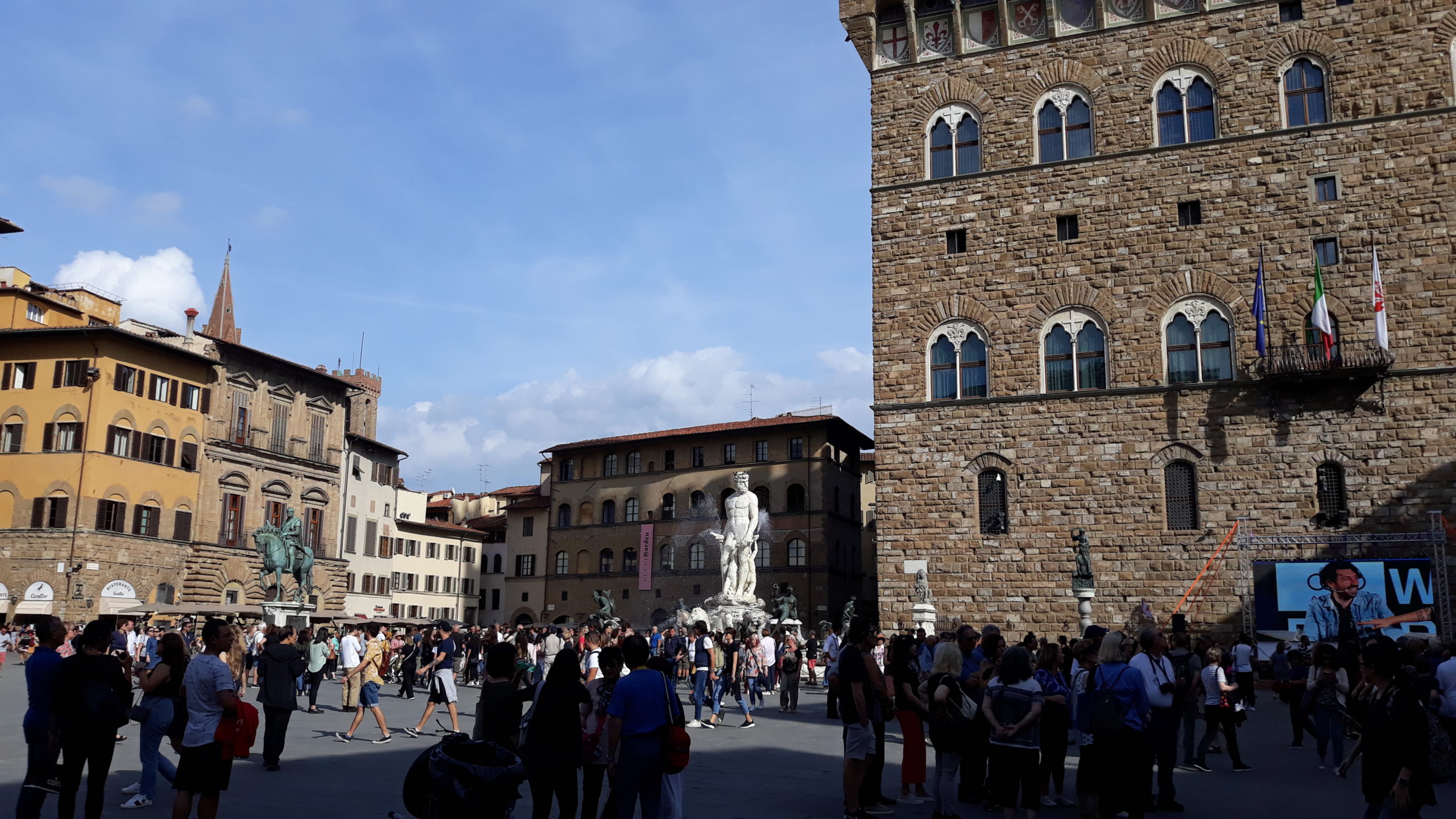
When the Medici moved their “Palazzo della Signoria” residence to the Palazzo Pitti, on the other side of the Arno River, Cosimo I de’Medici renames the building as the “Palazzo Vecchio” or the Old Palace, name by which it is still known today. The “Palazzo Vecchio” dates to the fourteenth century and was built on the ruins of two palaces (in the style of tower-houses) of the Uberti family. This aristocratic family was considered the most powerful in Firenze in the thirteenth century. Excavations carried out reflect that those buildings were actually built over the remains of a Roman theater.
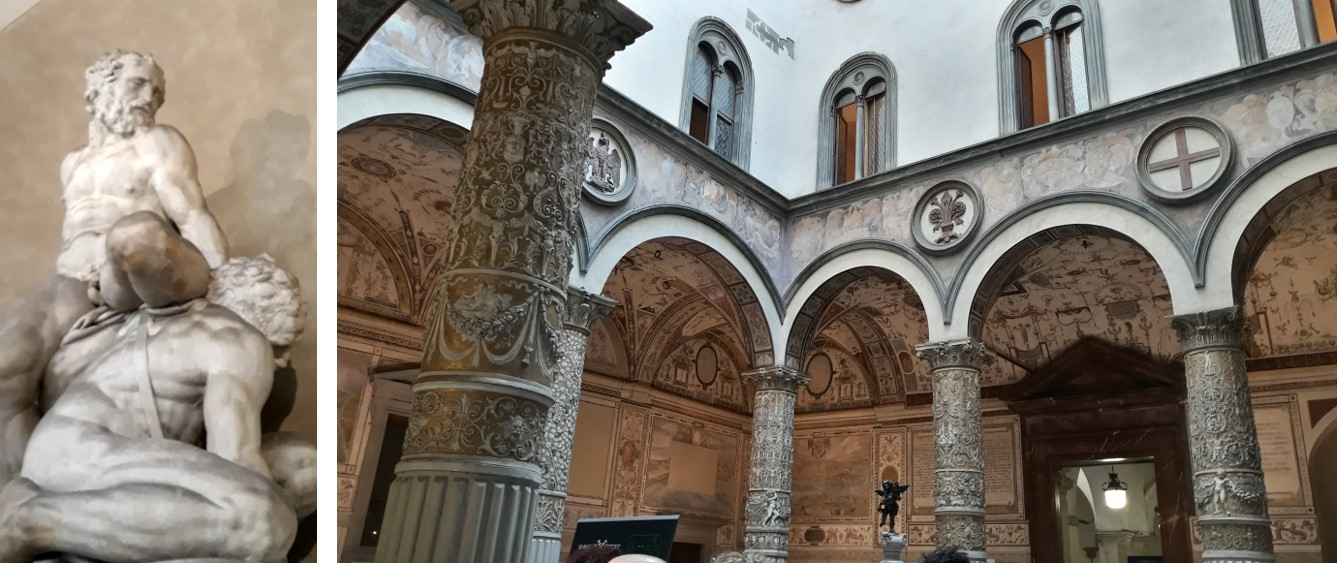
To a large extent, the current appearance of Palazzo Vecchio is due to renovations made by Cosimo I de’Medici in the 16th century. One of the most significant changes in the structure was to create a “mezzanine” in what was originally a two-story complex.
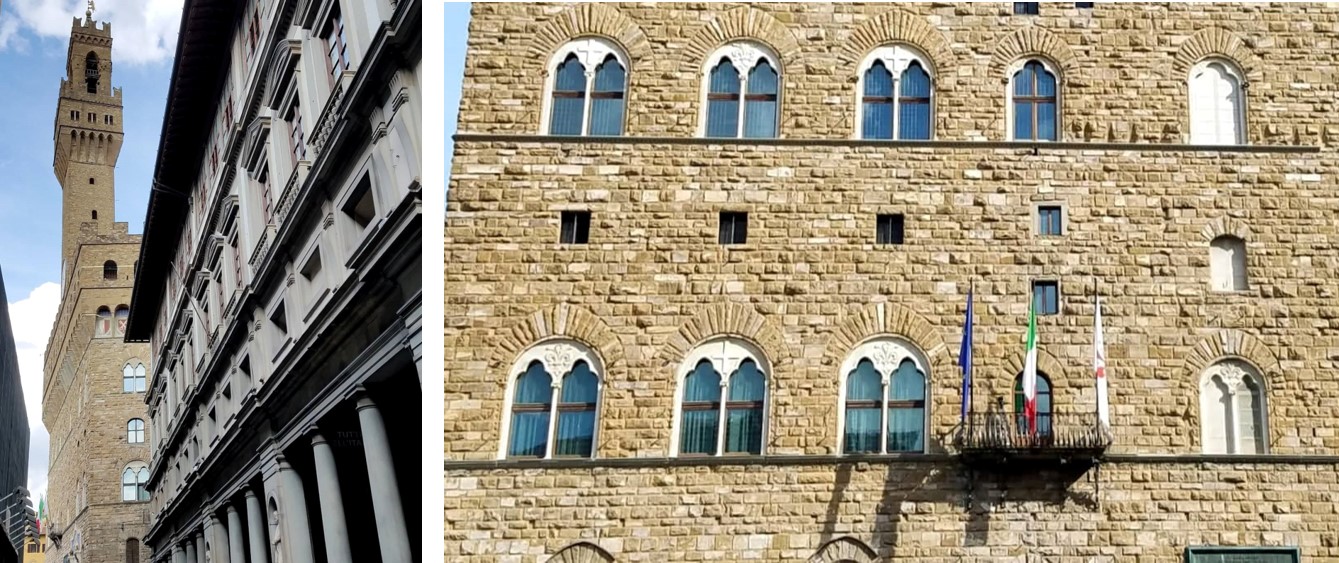
The building continues to belong to the Municipal Government of Firenze. It also serves as a museum dedicated to showcasing the history of the city and exhibiting some collections that belonged to one of the most powerful families in Firenze, the Medici family.
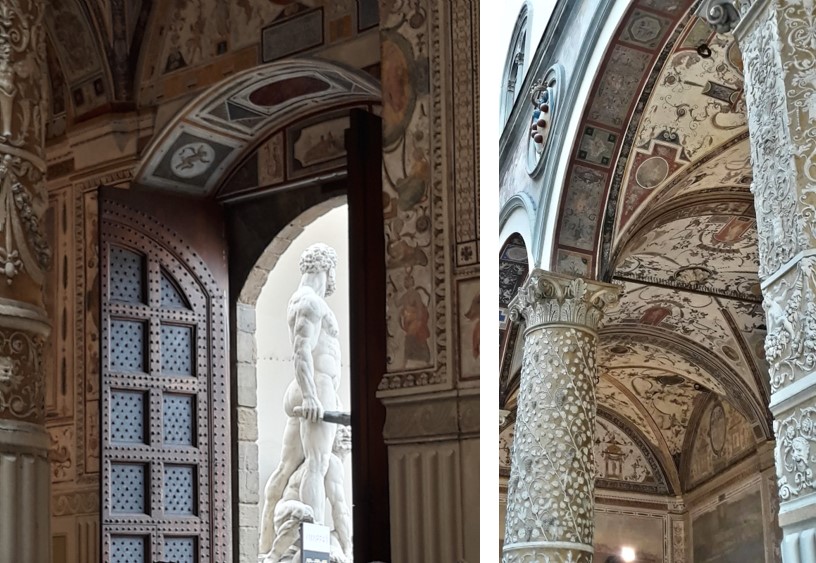
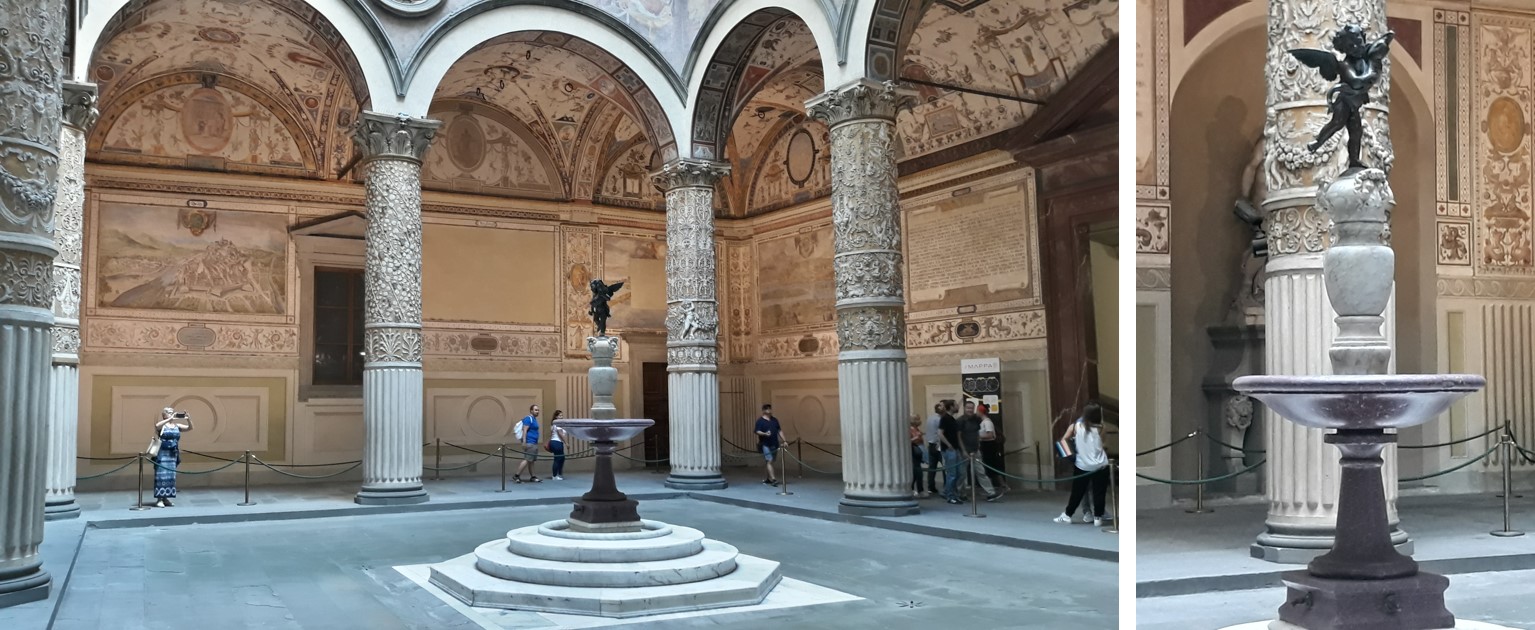
The tower with a clock that is seen crowning the Palazzo Vecchio, was called the Tower of “Arnolfo”, in honor of the architect Arnolfo di Cambio, who incorporates it into the palace, since it was an existing element in the previous structure. Arnolfo di Cambio who was in charge of the renovations of some Medici properties, builds the palace around this tower. The clock in the tower a single handed and works much like a solar clock. It is important to highlight that the tower was popularly known as “Torre della Vacca” deriving its name from the great bell it had and the great sound it emitted. It is said that the sound was very similar to what a cow would make walking with its bell, only much louder.
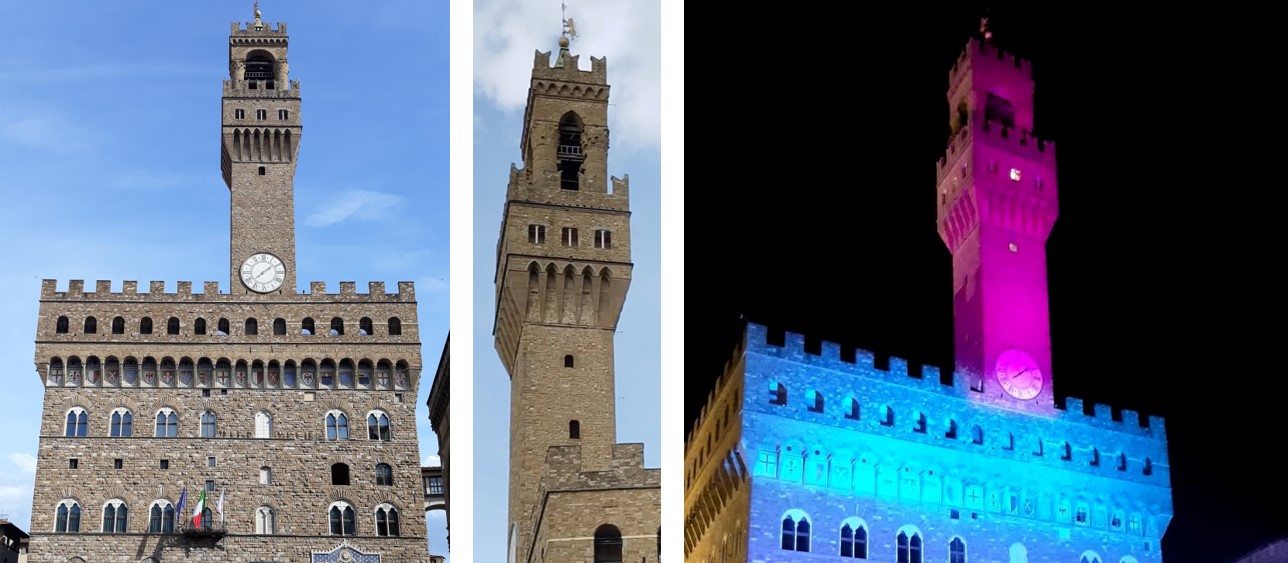
The “Palazzo Vecchio” was home to the Italian Parliament between 1865 and 1871. It was during these years that the city of Firenze was the capital of reunified Kingdom of Italy. In 1871, Rome became the capital of the Kingdom of Italy.
